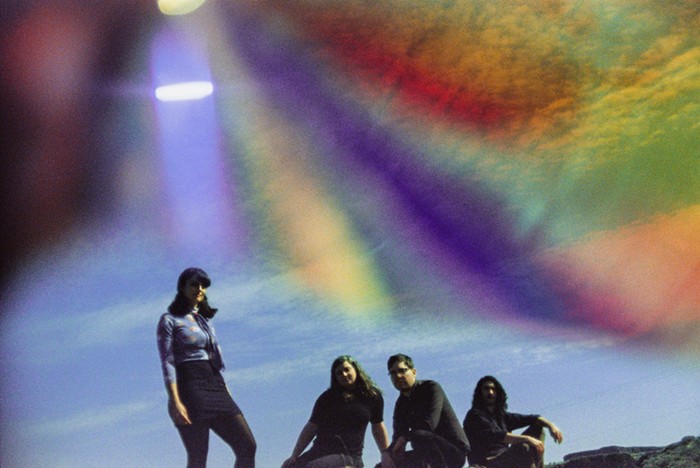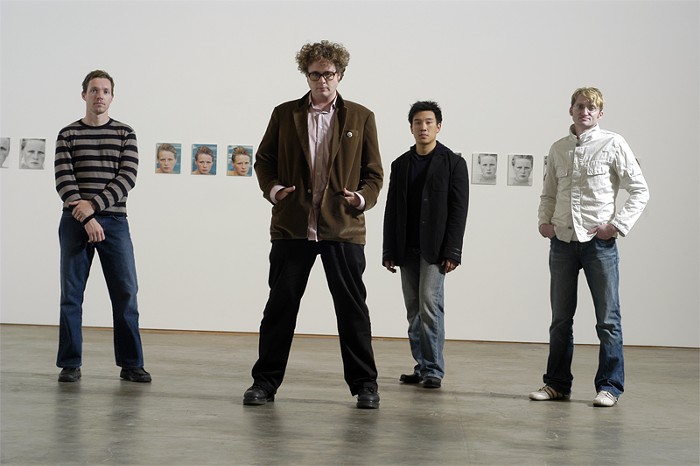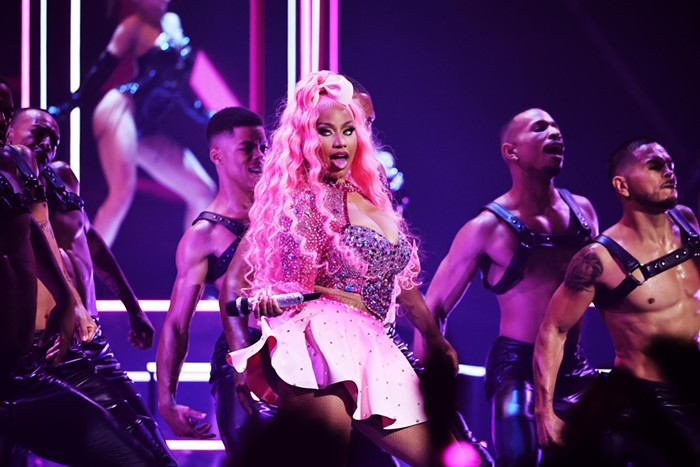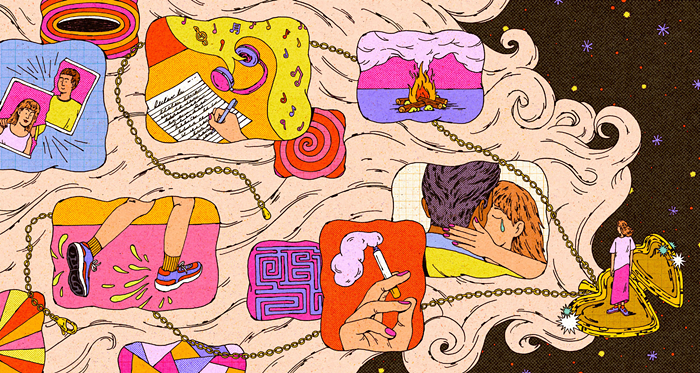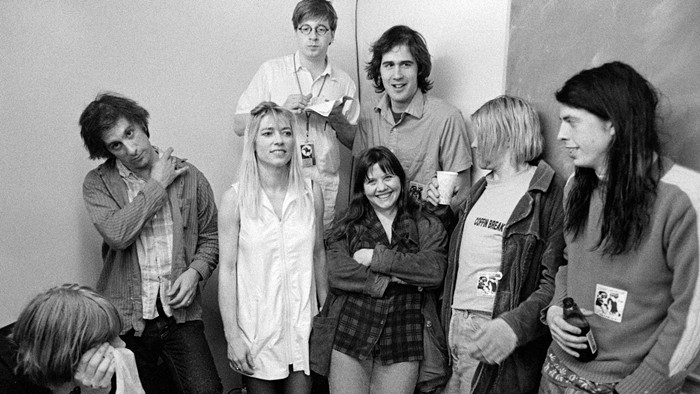Unfortunately, that's no guarantee: Club co-owner Colin Clifford is only certain of operation until October, and there is a deep understanding that the floor could fall out at any moment. But unlike so many of Seattle's nightclub dramas, this impending shutdown is not the fault of just one individual (Mark Sidran), but rather the result of an entire economy. That's why the beauty of the Tuesday night soul session is necessarily bittersweet; like any death row inmate, the 700 Club may get a brief stay of execution, but in the end, it's stuck on the wrong side of history in a kill-happy world.
Geography is the main element conspiring against the club. Downtown Seattle has a powerful manifest destiny to fulfill: to build up every square inch south of Denny and west of I-5. This makes the Denny Triangle (the 10-square-block area where the 700 Club is located) prime office space--the final frontier of corporate Seattle. Residential planning is also sealing the club's fate. At the local, county, and even state level, orders have been issued to prevent suburban sprawl by redirecting residential development back to the heart of Seattle. As far back as 1990, the state Growth Management Act legislated "infilling" in populated areas to avoid developmental sprawl into rural land. King County Executive Ron Simms, in his dogged fight to protect salmon habitats outside of the city, has issued the same ultimatum: Convert every last part of downtown Seattle into high-density live/work space.
The Seattle Times reports that developers from around the country and Canada have answered those calls, and a brief look at the development going up all around the 700 Club confirms that the club is in a world of trouble. Across the street, a new courthouse is going up for $165 million. Canadians are building a 32-story residential tower around the corner for $170 million. Two blocks away, Nordstrom's corporate headquarters will rise 25 stories into the Seattle sky, for a mere $80 million. Texans are building a $50 million office project at One Convention Place, which will be overshadowed by the $190 million Convention Center expansion--not to mention the $150 million adjoining hotel that comes with it. At nearby Eighth and Pine, $175 million is going toward creating an office-and-retail tower. That's just shy of a billion dollars in development, all going into the tiny area around 700 Virginia Street.
The new tenants will have little regard for the fact that the 700 Club was there first. If the club hasn't closed by the time they are all in, there will be liquor board harassment, and probably, as has happened in places like San Francisco, wild accusations of gangsterism spurred by the club's multi-ethnic patronage. So the eventual death of the 700 Club is inescapable, whether it comes in October or in February, whether the building is demolished to make way for offices or for condos.
The question is where to go from here. The first thing you have to do is go down to the 700 Club yourself as soon as possible. The crowds are thinner since the lease crisis, but current club promoter Allison Walker wants you to be assured that the music is as good as ever. From the Digable Allstars on Saturday nights to Soul Power Thursdays, the 700 Club is still pouring the groove on in the dark corners of the Denny Triangle.
A bigger question for the music community though, is what'll happen once the whole area is dragged into the sunlight and stripped of its cultural underground: Can the 700 Club transcend its own building and move its signature sound to other clubs? The dispersal of the 700 Club product has already begun, as the promoters who helped build the 700 Club's popularity, like Blake Micheletto, David Meinert, and William Wheeler have moved on to other locales. Imitation, as they say, is the highest form of flattery, and now there are improvised, beat-heavy nights at I-Spy, the Last Supper Club, Aro.space, Sit & Spin, the Baltic Room, and more. The problem is that it's not so easy to re-create the 700 Club experience in the grungy black caverns of I-Spy or in the crushed-velvet pretense of the Baltic Room. The crowds are whiter, the drinks are weaker, and the rooms just aren't the same. When the 700 Club opened up little more than two years ago, it was the physical location that first made it noteworthy. Owners Colin and Chris Clifford didn't put up any street signs--they left the stairwell poorly lit and half-painted, and they imbued the club's interior with soft red lighting. They filled the room with faded but elegant gold-and-red chairs grouped around card tables, creating an interior design that by a harsher light would look like it was lifted directly from an Elks Club Lodge. With its sequestered back rooms and low ceilings, it had the look and feel of an old-time speakeasy--a shadowy yet sophisticated corner of Seattle where a unique musical scene could grow to maturity in the half-light. When the rotating casts of accomplished soul musicians, DJs, and hiphop artists began playing there steadily, a near-perfect synergy of room and music was born. The flip side of that synergy is that the 700 Club is a non-transferable phenomenon. As owner Colin Clifford said, a successful club is a "mixture of the right space, music, and time," a combination intangible enough that he claims he'd be a fool to start completely over somewhere else. So that leaves the prospect of the 700 Club vanishing completely, leaving little more than scattered club nights around town as its legacy.
As unsatisfying as that ending may be for fans of the club, it will be even harder on many of the club musicians trying to scrape out a living in Seattle. Although Colin Clifford himself doesn't like to talk about the financial aspects of his club's success, it's well known that a combination of low overhead and consistently full houses has made the 700 Club one of Seattle's most profitable gigs for jazz and funk players. In the 700 Club's prime, a group with five or six musicians could easily earn over a thousand dollars for itself, even on a weeknight. Jazz guitarist Hans Fahling--who often appeared at the 700 Club as a sideman with Filthy Sounds or the Digable Allstars, as well as with his own fusion group Artindapop--remembers personally clearing $200 on a number of Wednesdays. "The alternative is either playing a straight-ahead jazz club like Tula's, or a jazz night at a non-jazz club like the Dubliner. In both cases, you'd probably make about $50-$75 a night. The most lucrative regular gigs are cheesy dinner jazz shows at hotel restaurants, but even those don't pay as well. Plus the fact that hotel gigs treat you like background noise, while the music has always been the center of attention at the 700 Club."
Eventually, Boeing will decay. Microsoft will splinter. Safeco's vaunted stadium roof will collapse and the insurance behemoth will be sued out of existence, dying by its own sword. Bit by bit, new shadows will creep into the corners of downtown, and some dimly lit club will rise again from the ashes.
